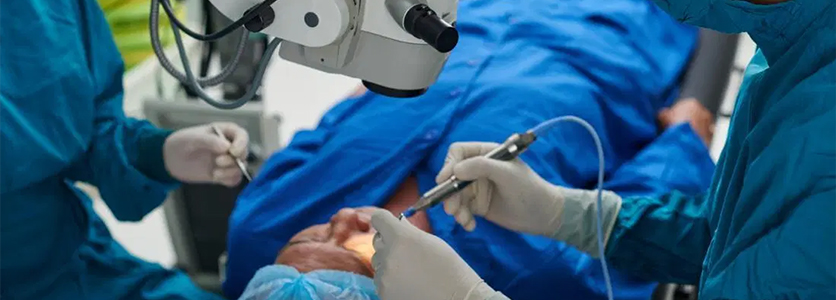Taking care of our eyesight is no easy feat as not everyone is blessed with 20/20 vision. However, as technology gets more advanced, many procedures can now be done to improve our eyesight. One of the many procedures available is vitreoretinal surgery.
Dr Ling Kiet Phang, consultant ophthalmologist at Columbia Asia Hospital – Iskandar Puteri, explains that vitreoretinal surgery is a group of procedures that are performed to treat eye problems involving the retina, macula and vitreous fluid. Procedures include vitrectomy, scleral buckling and intravitreal injection.
“One of the most common procedures is vitrectomy, where three micro-cannulas are inserted through the conjunctiva and sclera (white of the eye), to enable fine instruments to enter the eye,” says Dr Ling.
Different eye conditions require different type of procedures. Dr Ling says that there are five major conditions that require patients to undergo a vitrectomy such as vitreous haemorrhage, retinal detachment, macular surface disease, intraocular inflammation and dropped lens from primary cataract surgery.
While it is normal for patients to be worried about the outcome of certain procedures, Dr Ling assures patients that the success rate for this surgery is relatively high. “Vitrectomy is a fairly routine surgery and can usually be performed safely as an outpatient procedure. With the improvements in surgical techniques and advancement in instrumentation, vitreoretinal surgery has evolved rapidly over past decades.”
Other than the success rate, side effects as well as recovery time are also cause for concern for patients. Complications can include bleeding, infection, cataract and retinal detachment. Dr Ling says that while the success rate is high, the complications from vitrectomy are relatively unusual.

A vitrectomy can usually be performed as an outpatient procedure because of advancements in surgical techniques and instrumentation.
Dr Ling explains, “Bleeding inside the eye is not uncommon, especially in diabetic vitrectomy, but it mostly resolves itself. Infection in the eye (endophthalmitis) is rare but can give rise to serious loss of sight. Retinal detachment, which can happen within the first two months following vitreoretinal surgery, will require further surgery in order to repair it.
“Almost all patients develop cataract more rapidly than normal following this type of surgery. Following surgery, intraocular pressure (pressure within the eye) may rise, so you may require eye drops to control the pressure for a while.”
In regard to the recovery time taken, Dr Ling says, “After surgery, your vision should gradually improve, but it may take up to six months or longer to regain ideal vision.
Depending on the additional procedures involved, most people are able to return to their daily activities after two to four weeks, but a full recovery often takes several months.”
Dr Ling believes that many patients do not fully understand the cause of eye disease and consequences of delaying surgery, hence they worry they would become blind following the surgery.
His advice for patients who are hesitant about surgery is to bring their caregivers along to discussions with their surgeons. The patients and caregivers must be given the opportunity to receive all the information objectively and, if necessary, shown a video of the procedure the surgeon intends to perform. Vitrectomy is a low-risk procedure, but as with all procedures, talk to your doctor about what to expect before, during and after it is done.
Share:
Was this article helpful?
Share:
Was this article helpful?
Health Packages
Elevate your health with tailored health packages at Columbia Asia Hospital. Take charge of your health journey today.
AIA Policyholders Self-pay Benefits
Pink October 2024
From
RM80

